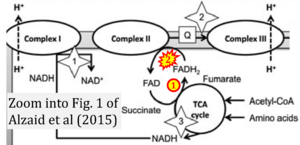Alzaid 2015 Springer
| Alzaid F, Patel VB, Preedy VR (2015) Biomarkers of oxidative stress in blood. In: Preedy V, Patel V (eds) General methods in biomarker research and their applications. Biomarkers in disease: methods, discoveries and applications. Springer, Dordrecht. https://doi.org/10.1007/978-94-007-7696-8_41 |
» Springer
Alzaid F, Patel VB, Preedy VR (2015) Springer, Dordrecht
Abstract: The malfunction of the finely tuned homeostatic systems that maintain oxidative balance is part of the pathology of almost every known human disease. There are scores of individual components and pathways which maintain oxidative balance. One or more of these maybe altered in disease, though it is difficult to determine what the triggering pathway or analyte is. In light of this, biomarkers are useful tools to evaluate oxidative imbalance or indicate the degree of oxidative stress.
When selecting which biomarkers for oxidative stress, there are three categories of biomarkers to choose from. These depend on the target of oxidation and are isoprostanes, oxysterols, and hydroxyoctadecadienoic acid. Biomarkers of nucleic acid oxidation include nucleotides, single- and double-stranded breaks in DNA, and RNA oxidative products. Oxidative damage to proteins can be measured via protein carbonyls, glutathione levels, glycosylated hemoglobin, and erythrocyte oxidation from fluorescent heme degradation products. In isolation, each of these will give specific information on the target of oxidation, as well as providing tentative information regarding affected pathways. Here, we describe in detail the selective markers, protein carbonyls, oxysterols, isoprostanes, heme degradation products, HbA1C, and many more.
All the above biomarkers are discussed in this review. As with ideal biomarkers, these have a mixed utility and can be measured in different tissues and compartments. In blood, each will provide a certain amount of information, which will vary between giving a systemic scope of oxidative stress (e.g., erythrocyte oxidation) to evaluating oxidative stress in specific diseases (e.g., glycosylated hemoglobin and diabetes). Ideally, it is better to select multiple biomarkers based on an in-depth knowledge of the condition at hand.
• Bioblast editor: Gnaiger E
Correction: FADH2 and Complex II
- FADH2 is shown as the substrate feeding electrons into Complex II (CII). This is wrong and requires correction - for details see Gnaiger (2024).
- Gnaiger E (2024) Complex II ambiguities ― FADH2 in the electron transfer system. J Biol Chem 300:105470. https://doi.org/10.1016/j.jbc.2023.105470 - »Bioblast link«


